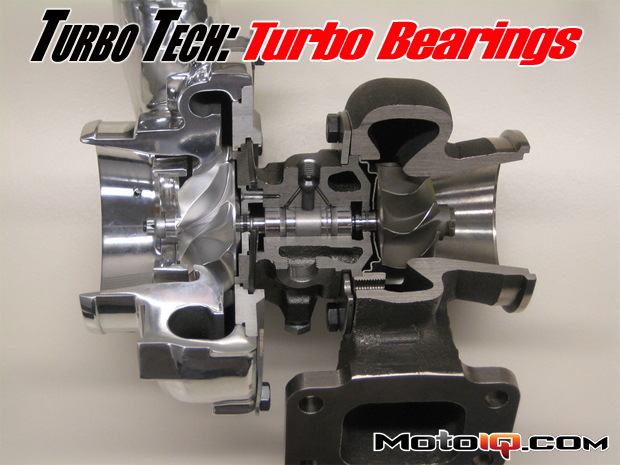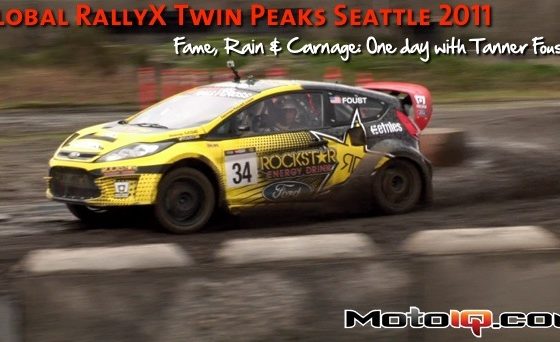 |
Turbo Bearings
by Khiem Dinh
Khiem Dinh is an engineer for Honeywell Turbo Technologies at the time of this writing. All statements and opinions expressed by Khiem Dinh are solely those of Khiem Dinh and not reflective of Honeywell Turbo Technologies.
We like turbos at MotoIQ. Why? In the phrase made famous by Tim Allen, “more power!” In order for a turbo to cram air into an engine, it has a pair of wheels and a shaft spinning at incredible speeds. Depending on the size of the turbo, they can spin anywhere from 100,000 rpm (big turbos) to 300,000 rpm (small turbos). 300,000 rpm equals 5000 revs a second. Put another way, if you rolled a compressor wheel on the ground, it would go about six football fields a second. That’s about 1.7 times the speed of sound. Wrap your head around that! The rotating assembly consisting of the shaft, turbine wheel, and compressor wheel encounter axial and radial loads that want to push the wheels into the housings and rub parts together. To keep the rotating assembly supported and freely spinning, turbos currently either use a journal or ball bearing system. There are variations on each theme, but we’re going to go over the most common designs. First, we need to discuss the loads they encounter.
The bearing system of a turbo has to resist radial and thrust loading created by the compressor and turbine wheels. Radial loading is probably easier for most people to visualize; the rotating assembly will want to wobble due to various loadings so the bearings keep the rotating assembly from moving around excessively. The wobble is known as shaft motion in industry speak. If there is too much shaft motion, the compressor and turbine wheels may end up rubbing the housings destroying the turbo.
 |
Thrust and radial loads act on both the compressor and turbine wheels. Thrust loading is along the axis of the shaft and is created by pressure differentials between the compressor and turbine sides. Radial loads act perpendicularly to the centerline of the turbo and are a cause of shaft motion. |
Thrust loading pushes the rotating assembly back and forth and is created by pressure differentials in the compressor and turbine housings. An approximation of the thrust load on the rotating assembly can be calculated by taking the difference between (compressor housing pressure x compressor wheel area) and (turbine housing pressure x turbine wheel area). For example, let’s say you have compressor and turbine wheels of equal area at 3 in^2. There is 15 psi of pressure in the compressor housing (boost) and 30 psi in the turbine housing (exhaust back pressure). The net thrust load is 15 psi x 3 in^2 = 45 lbs of thrust pushing from the turbine side towards the compressor side. The bearing system has to be able to support the 45 lbs of force or parts will start rubbing against each other leading to expensive things breaking. Take a 45 lb plate from the gym, stack it on the end of the shaft and that’s the thrust load the bearing system has to support.
The journal bearing system is the most common type of turbo bearing system because it is cheap and it works. The journal bearing system typically consists of two types of plain bearings: cylindrical bearings to contain radial loads and a flat thrust bearing to manage thrust loads. Plain bearings in turbos use oil to keep parts from rubbing each other based on the hydrodynamic principle. In hydrodynamic lubrication, the fluid (oil in a turbo) stays between the moving surfaces and prevents metal-to-metal contact.
 |
The flat plate that looks like Pac Man is the thrust bearing. The one shown is know as a 270 degree thrust bearing. There are also 360 degree thrust bearings that do not have the slot and can handle greater thrust loads. The round thing above the thrust bearing is the thrust collar which slides into the slot of the thrust bearing. The two cylindrical bronze looking parts are the journal bearings. The part between them is a spacer used to locate the journal bearings on the shaft of the turbo. |



